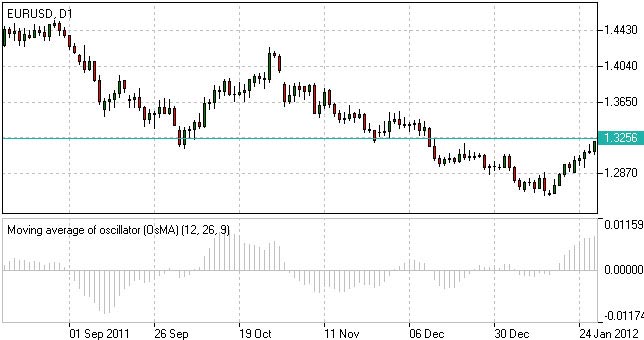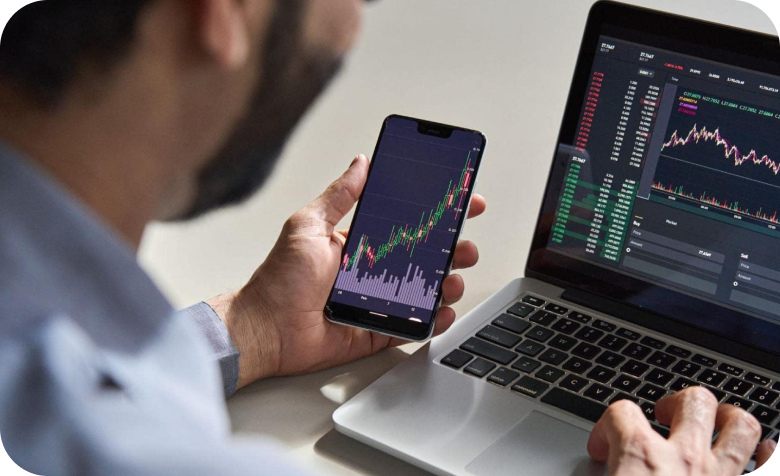- Ausbildung
- Technische Analyse
- Technische Indikatoren
- Trendindikatoren
- Gleitender Durchschnitt des Oszillators
Gleitender Durchschnitt des Oszillators - OsMa Indikator
Gebrauchsanweisung für den Indikator OsMa
Änderungen der Bewegungsrichtung:
- Wenn OsMA seine Bewegung nach unten stoppt und fängt an zu wachsen, besonders in von der Nulllinie entfernten Bereichen, ist das ein Zeichen der haussierenden Umkehrung;
- Wenn OsMA seine Bewegung nach oben stoppt und fängt an, herunterzufallen, ist das ein Zeichen der bärenhaften Umkehrung.
Kreuzung der Nullachse:
- Der Anstieg von OsMA über Null (MACD quert die Signallinie nach oben durch) deutet ein Kaufsignal an;
- Der Absturz von OsMA unter Null (MACD quert die Signallinie nach unten durch) erzeugt ein Verkaufsignal.

Indikator Gleitender Durchschnitt des Oszillators (OsMA)
Berechnungsformel für gleitenden Durchschnitt des Oszillators
OsMA = MACD – Signal
Gleitender Durchschnitt des Oszillators auf der Handelsplattform
Forex Indicators FAQ
What is a Forex Indicator?
Forex technical analysis indicators are regularly used by traders to predict price movements in the Foreign Exchange market and thus increase the likelihood of making money in the Forex market. Forex indicators actually take into account the price and volume of a particular trading instrument for further market forecasting.
What are the Best Technical Indicators?
Technical analysis, which is often included in various trading strategies, cannot be considered separately from technical indicators. Some indicators are rarely used, while others are almost irreplaceable for many traders. We highlighted 5 the most popular technical analysis indicators: Moving average (MA), Exponential moving average (EMA), Stochastic oscillator, Bollinger bands, Moving average convergence divergence (MACD).
How to Use Technical Indicators?
Trading strategies usually require multiple technical analysis indicators to increase forecast accuracy. Lagging technical indicators show past trends, while leading indicators predict upcoming moves. When selecting trading indicators, also consider different types of charting tools, such as volume, momentum, volatility and trend indicators.
Do Indicators Work in Forex?
There are 2 types of indicators: lagging and leading. Lagging indicators base on past movements and market reversals, and are more effective when markets are trending strongly. Leading indicators try to predict the price moves and reversals in the future, they are used commonly in range trading, and since they produce many false signals, they are not suitable for trend trading.
Verwenden Sie Indikatoren nach dem Herunterladen von einer der Handelsplattformen, die von IFC Markets angeboten sind.
Große Auswahl an Handelsplattformen für alle Geräte

Not sure about your Forex skills level?
Take a Test and We Will Help You With The Rest


